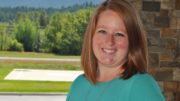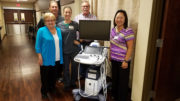Submitted by
Kate Stephens
Community members in Libby, Troy, and the Yaak may soon be receiving a survey in their mailbox. This survey will help Cabinet Peaks Medical Center identify health services needed in the community, and will be sent to a random sampling of homes this month. The information gathered will be used to help the medical center with strategic planning, grant applications, the development of new programs, and will also be shared with other community groups interested in addressing health issues.
Cabinet Peaks Medical Center is teaming up with the Montana State University Office of Rural Health and the National Rural Health Resource Center. Through this partnership, the National Rural Health Resources Center is assisting Cabinet Peaks Medical Center in the analysis of the survey data to help define local community needs, use of local health care services, and overall community health.
The community health needs assessment allows citizens in rural Montana counties to take responsibility for the health of their community by completing the survey. Those who complete and return the survey according to the instructions included in the accompanying letter will be entered into a drawing for a $50 gas card.
“The survey is completely voluntary, but we really want to encourage our residents to complete it, so we decided to offer a small incentive,” stated Bruce Whitfield, CEO at Cabinet Peaks Medical Center. “Even if you don’t use the healthcare services at Cabinet Peaks Medical Center, your response is important to us because every survey returned and comment made will represent others in the area and will help guide us in planning responsive and high quality local healthcare for the future.”
Terry Hill, Executive Director of the National Rural Health Resource Office is happy to be working with Cabinet Peaks Medical Center. “We are pleased to be able to bring some of the best community health resources in the country to Cabinet Peaks Medical Center. The goal of this initiative is to assist forward-thinking rural hospitals and communities in aligning their resources, to address their present and future needs in the best way possible.”
An accompanying goal of this process is to help keep health care dollars within the local community. While the vast majority of health care can be provided locally, rural citizens often drive to larger medical facilities for care, spending money on health care and non-health care purchases that could be spent locally. It is estimated that within a typical rural community, millions of dollars in revenue is lost this way. This revenue could be retained in the local community by giving local residents a chance to help form the way healthcare looks in their own rural area.




